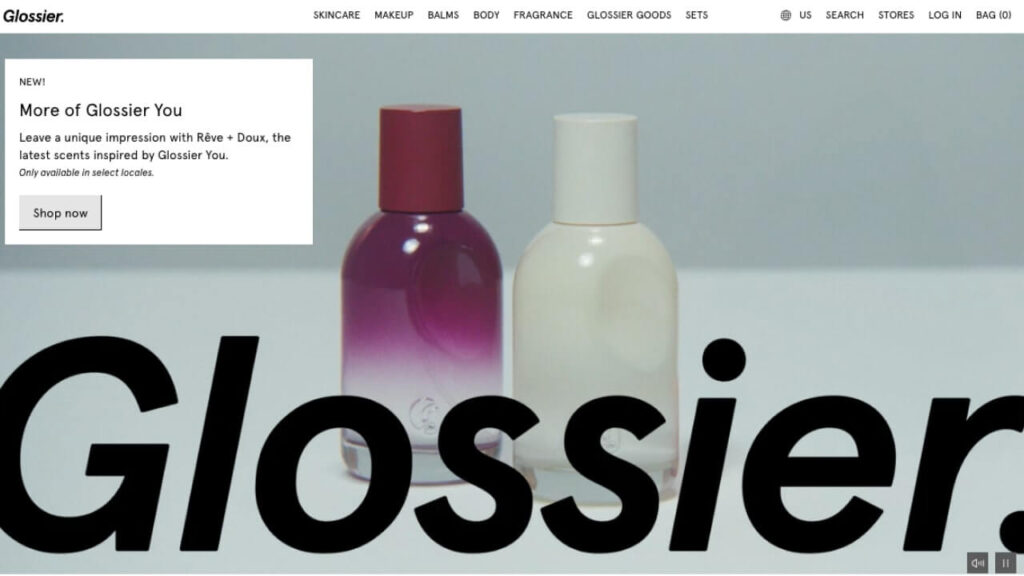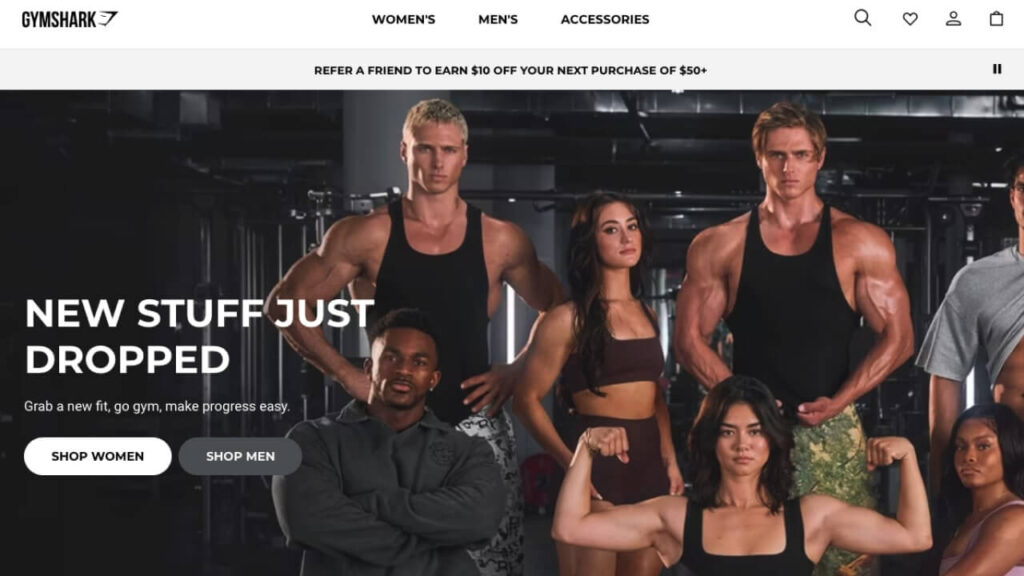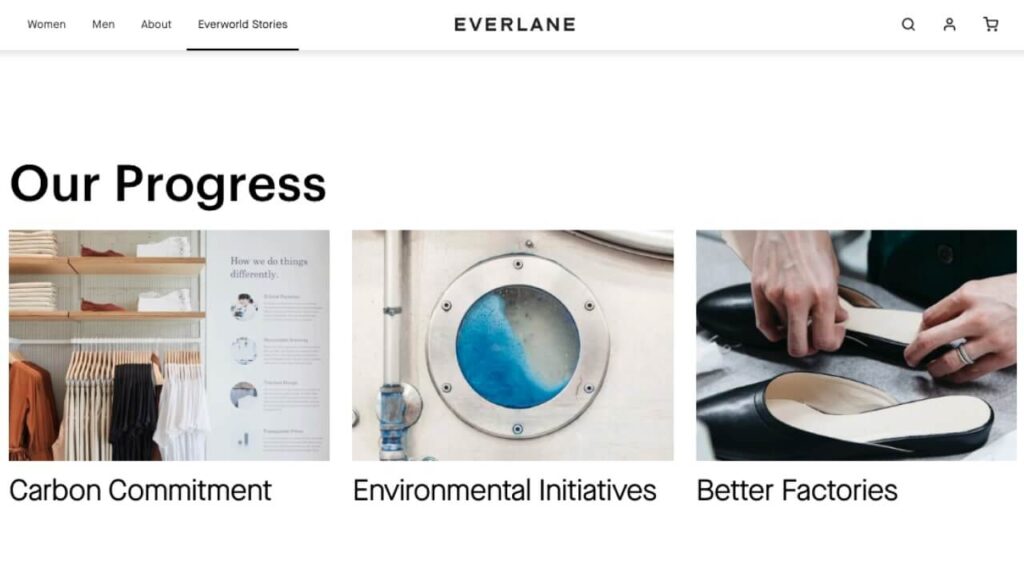Sell custom products without inventory
In the booming fashion industry, knowing how to market a clothing brand online can be the difference between standing out and blending into the crowd.
From defining your target audience and offering a personalized shopping experience to leveraging influencer marketing, this guide provides strategies to help your clothing brand reach its full potential.
This post may contain affiliate links, which means we may earn a commission if you make a purchase through those links. This comes at no additional cost to you.
Key takeaways
- Identifying your target audience is critical for focusing your efforts and making your fashion brand stand out in a competitive market.
- Establishing a consistent and recognizable brand identity helps you build customer trust and loyalty.
- Leveraging social media platforms like TikTok, Instagram, and Pinterest is essential for reaching a global audience.
- High-quality images, engaging video content, and user-generated content can significantly boost your brand’s credibility and appeal.
- Influencer and affiliate marketing, contests, and seasonal promotions are powerful tools for improving brand awareness and driving sales.
19 ways how to promote your clothing brand

A good fashion marketing strategy is about using existing channels, platforms, and tools to tell the world about your brand story and value.
From social media channels to Google Ads and charities, this is your ultimate guide on how to promote a clothing brand.
1. Know your target audience
Before pursuing any clothing brand marketing ideas, you must first define your target audience and niche. Having an unfocused target market may lead you to miss sales opportunities and waste resources.
A niche isn’t simply a product category – it’s about appealing to a particular group of people with shared interests. Rather than just general categories like Activewear or Streetwear, consider examples like “retro gaming apparel” or “urban fishing gear”.
To build a clearer picture of your ideal customer, conduct market research and consider the following:
- Sociodemographic traits: Age, gender, education, income, and relationship status.
- Interests: Hobbies, favorite activities, and things they are passionate about.
- Geographic traits: Location, climate, and cultural factors.
- Needs: What problems or gaps in the market can your brand uniquely address?
Developing a detailed portrait of your target customer will help you craft products and messages that resonate.
Use surveys, check Google Analytics, or engage with social media followers for real feedback and insights into your target market.
2. Establish a strong brand
Branding is more than just a logo – it’s how you present your clothing business to the world. To successfully connect with the audience and establish a solid identity, your brand should be visually compelling and consistent across all channels.
Create a visual identity
- Logo: Make the face of your brand memorable. Famous examples include Nike’s Swoosh or Lacoste’s crocodile.
- Slogan: A short, catchy phrase can make your brand stick. Think of iconic slogans like “Just Do It” or “I’m Lovin’ It.”
- Colors and fonts: Choose a consistent color palette and readable fonts that reflect your brand’s personality. For example, soft, neutral colors might convey luxury, while bold primary colors project energy and strength.
Branding goes beyond the visual aspects. It’s also about crafting an authentic story that communicates your values. Developing a strong brand identity will help customers relate to your company, trust it, and keep coming back.
The benefits of strong branding
- Gain customer loyalty.
- Stand out from competitors.
- Build recognition and trust.
- Stay focused on your core goals.
- Connect emotionally with your audience.
3. Be active on social media

Leveraging social media accounts is a game-changer when marketing for fashion brands. Here are the key platforms where your clothing line can make a bold impact.
TikTok
TikTok has become a powerhouse for fashion brands. With short, creative videos, you can grab the attention of younger audiences and use trends to gain loyal followers.
- Trending sounds and hashtags: Use popular trends and hashtags to boost visibility.
- Challenges and influencers: Engage in or create your own TikTok challenges to encourage interaction and user-generated content.
TikTok’s algorithm rewards creativity and engagement, making it a great place to experiment with your clothing brand marketing strategy.
Instagram is a must for those in the fashion industry. With stunning images and shoppable posts, it’s the perfect place to showcase your designs and establish your brand’s aesthetic.
- High-quality images: Use polished product photos and user-generated content to build an aesthetically cohesive feed.
- Instagram Stories and Reels: Engage with your audience through behind-the-scenes content, flash sales, or styling tips.
- Instagram Shopping: Make your products shoppable and earn direct sales from Instagram posts for easier conversions.
Pinterest is a goldmine for fashion marketing, offering the perfect space for building visually compelling boards that inspire shoppers.
- Create inspiring boards: Show how your clothing line fits a particular lifestyle or trend, making it easy for shoppers to picture themselves wearing your designs.
- Optimize Pins for search: Use relevant keywords in your descriptions to make the content more discoverable.
Pinterest’s massive, style-savvy user base combined with its visual-first approach makes it a powerful tool to drive traffic to your store.
4. Participate in groups and communities
Online communities like Facebook groups, forums, or Reddit threads are great spaces to connect with fashion enthusiasts. Raise brand awareness without being overtly promotional by contributing to discussions, offering advice, and sharing expertise.
Look for groups that align with your niche and provide value by sharing knowledge rather than pushing sales. This builds trust and helps you gather leads who are genuinely interested in your fashion line.
Make it happen today!
5. Use quality product photos

In fashion, appearance is paramount. High-quality photos play a crucial role in marketing for a clothing brand, helping customers visualize your products clearly while setting a professional tone for your brand.
Good visuals are particularly essential for eCommerce, where buyers can’t physically touch the clothing. For that, consider these tips:
- Show your products in different angles, lighting, and settings.
- Use lifestyle shots to help customers imagine themselves wearing your designs.
- Take close-ups of the garment to highlight the fabric quality.
6. Create engaging video content
Video content is highly effective for showing your products in action. It gives potential customers an up-close look at the personality, quality, and style of your brand, making them feel more excited to buy.
Fashion brands can leverage this medium by creating:
- Behind-the-scenes footage from photo shoots or design processes.
- Styling guides showing how to pair different items from your collection.
- Customer testimonials highlighting real users wearing your clothing.
7. Leverage user-generated content (UGC)
Encouraging customers to share their experiences with your products through photos or reviews is an excellent way to build credibility and a community.
Share or repost this content on your own social media or website to build trust with potential buyers, showing that real customers love your brand.
Encourage UGC by using a branded hashtag and offering incentives like discounts or promo codes for customers who share photos repping your brand.
8. Take advantage of influencer and affiliate marketing
In the age of content, influencer and affiliate marketing are among the best ways to market a clothing brand.
Influencer marketing
Collaborating with influencers is a powerful way to promote your clothing brand. Social media Influencers with large followings can help spread the word about your brand to a highly targeted audience.
For the most authentic and effective partnerships, choose influencers with a strong online presence whose style and content align with your brand values and aesthetic.
Affiliate marketing
Affiliate marketing lets you partner with influencers, bloggers, or brand ambassadors who will promote your products in exchange for a commission on any sales generated through their referral links.
This is an efficient way to market a new line of clothing across multiple platforms without creating all the content yourself.
9. Reward brand loyalty
Loyal customers are invaluable to your business. Establish loyalty programs that reward repeat buyers with discounts, exclusive access to new products, or personalized offers.
These programs encourage customers to engage with your brand and help build brand loyalty, supporting long-term consumer relationships.
10. Organize contests, giveaways, and support charities
These are fantastic ways to enhance brand awareness and engagement.
Giveaways are great social marketing techniques. Promote your brand online by posting a giveaway or contest and give consumers a chance to discover and win a product. A freebie will capture attention while encouraging people to explore other pieces in your collection.
More than free stuff, people appreciate brands that champion social causes. Supporting charities is a chance to do good in your community while fostering deeper connections with new and potential audiences.
Search for a local or global charity event or join a charitable Facebook group. Create promotional events like charity fashion shows or sell custom merchandise and donate a percentage of the proceeds.
11. Offer personalization

Offering personalized clothing options is one of the best ways how to promote your online clothing business and differentiate your brand from competitors. People like customizing apparel, whether through monograms, prints, or colors.
Personalized shopping experiences add a unique touch to your products, making them more appealing to individual preferences. Create content promoting these custom clothing options to attract customers looking for bespoke garments.
12. Optimize your website and content
A well-optimized website is critical for driving traffic and converting visitors into customers. Your website must be fast, mobile-friendly, and easy to navigate.
Implement search engine optimization (SEO) strategies by using relevant keywords, optimizing product descriptions, and publishing listings with quality images.
Content marketing includes blog posts, landing pages, or videos. From partnering with fashion bloggers to hiring professionals – the goal is to create quality and engaging content highlighting your fashion brand’s unique offerings.
A robust content strategy can:
- Increase organic growth
- Rocket your sales
- Enhance brand awareness
- Attract customers
- Establish brand trustworthiness
13. Highlight customer feedback and reviews

Use customer feedback like reviews and testimonials to your advantage. This content type builds trust with potential buyers and provides social proof.
Around 49% of consumers read online reviews before purchasing. Leverage this to attract more customers by displaying positive feedback that includes helpful information about your products, like the fit and fabric of garments.
Make sure customer reviews are easily visible on your site. Display them on your homepage, a dedicated testimonials page, and product pages to reassure new customers about the quality of your clothing.
14. Leverage email marketing
Compelling email marketing campaigns are a cost-effective way to target potential and existing customers. In fact, 59% of consumers say that marketing messages influence their purchasing decisions.
Follow these tips to craft a solid email marketing strategy:
- Build an email list: Encourage buyers to subscribe to marketing emails and gather insights from cart abandonment and post-purchase customer feedback.
- Write click-worthy subject lines: Be creative but avoid spammy language. The subject should drive customers to take action.
- Make eye-catching designs: Use newsletter templates or custom designs with a clear call-to-action button leading to your newest collection or latest sale.
- Use seasonal appeal: Check out our marketing calendar for key dates to capitalize on during high-traffic shopping periods.
15. Offer seasonal deals
Seasonal promotions are a great way to increase sales and create urgency. 59-62% of consumers confirm that a great deal from a brand-new retail store would encourage their first-time purchase.
Offer discounts and special deals around holidays, seasonal changes, and major shopping events like Black Friday or Cyber Monday. Leverage these opportunities to attract both new and returning customers.
16. Use paid ads
Online advertising through search engines, social media ads like Facebook or Instagram, or marketplaces such as eBay and Etsy helps you reach highly targeted traffic based on user demographics, interests, and behavior.
Allocate a marketing budget to maximize the reach of your paid campaigns. Combining paid ads with SEO and organic marketing strategies can be a powerful way to boost visibility and conversions.
For example, utilize search engine marketing (SEM) to make your ads appear at the top of Google search results when users search for relevant keywords. Use tools like Google Keyword Planner and Ahrefs Keyword Generator to identify high-ranking terms to bid on.
17. Follow the latest trends

Staying on top of fashion trends is essential for clothing brands to remain relevant. Analyze Google Trends and social media to better understand the life cycle of different styles and clothing pieces.
Incorporate the latest trends into your collections or participate in viral social media posts and challenges. Aligning your clothing company with current trends keeps your brand fresh and appealing to customers.
18. Highlight sustainable practices
Modern consumers value sustainability. If your brand follows ethical or eco-friendly practices, such as using sustainable materials or fair-trade labor, highlight these efforts.
Offering eco-friendly custom clothing can further differentiate your brand. Emphasize this in your online marketing strategies through compelling videos that showcase your environmentally responsible practices to appeal to eco-conscious shoppers.
19. Track your campaign performance
Regularly assess all your digital marketing efforts and adjust the strategy accordingly for better results.
Use tracking and analytics tools like HubSpot to gather valuable data on your website and social media performance, focusing on metrics such as traffic, reach, clicks, and conversions.
Explore Google Analytics to understand how potential customers are finding your brand. Additionally, conduct competitive auditing to learn what other brands offer, how well they are performing, and how they are positioning themselves to gain customers.
Examples of successful fashion marketing campaigns
Here are some examples of innovative and successful clothing brands’ marketing campaigns to draw inspiration from:
1. Glossier: Although primarily a beauty brand, Glossier capitalized on user-generated content to expand its product offering to include clothing. Encouraging customers to post photos of themselves using Glossier merch, this grassroots marketing approach creates a strong sense of community and brand loyalty.

2. Gymshark: Gymshark’s influencer-driven marketing has been highly effective, especially within the fitness community. By partnering with popular fitness influencers, Gymshark gained a massive following and has become a go-to brand for athleisure.

3. Everlane: Everlane emphasizes transparency and ethical production practices in its online marketing strategy. The Radical Transparency campaign showcases how and where their products are made, appealing to environmentally-conscious consumers.

Start your own clothing store with Printify
Starting your own clothing line with Printify is simple, cost-effective, and low-risk. Our platform is simple and easy to use, even for non-tech-savvy merchants. Register, explore, and automatically fulfill orders for your online clothing brand with Print on Demand.
- Sign up for free: Create a free account to access over 900 products for your custom clothing company.
- Choose a product: Find the perfect item based on category, print method, pricing, or Print Provider.
- Design your products: Use Printify’s Product Creator to make epic clothing designs.
- List your products: List the custom products on your online store using our various eCommerce integrations.
- Earn a profit: When a customer orders, Printify takes care of printing and shipping, letting you focus on growing your brand and making money.
Ready to join the fashion world?
With all the tips we’ve covered in this article, you now know how to market a clothing brand effectively. Use this guide as a roadmap and take all necessary steps to get your brand out there.Here’s a quick recap on how to craft a great online marketing strategy for your clothing line:
- Identify your target audience
- Create solid branding
- Optimize your online store
- Build a marketing strategy for your clothing business
- Observe and incorporate trends
- Analyze data and fine-tune your approach
Join Printify and elevate your clothing brand with our seamless print-on-demand services. Stand out from the competition by offering custom clothing and grow your sales by leveraging this efficient and flexible business model.












